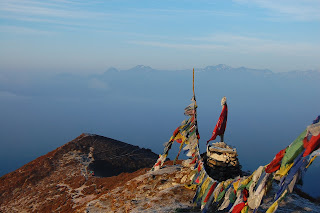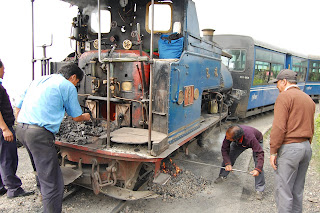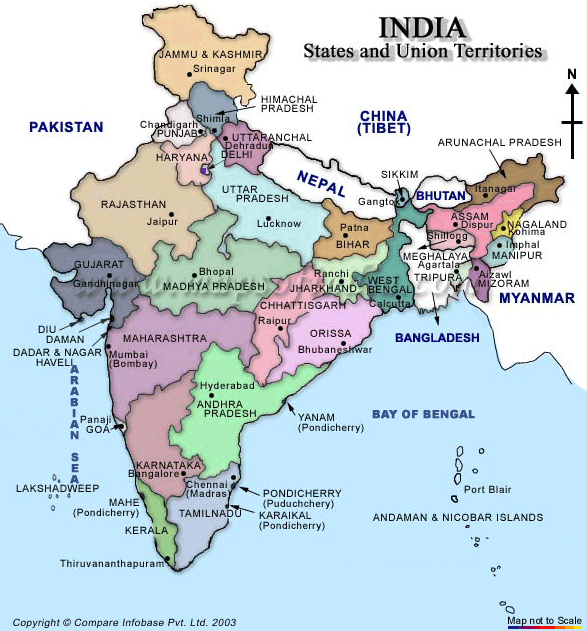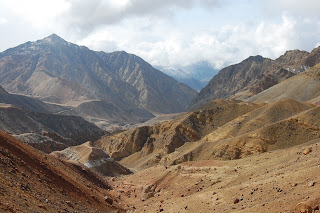
We took a dramatic flight from Delhi, up north into the the Himalayas, and landed into the high-altitude desert of Leh. Leh, situated in the eastern region of Kashmir (or Ladakh), is stunningly beautiful. There is really no way that any amount of pictures or words could describe the immense panoramas of this Himalayan mountain-scape. The desert-like valley floor gives rise to stark purple, black, and brown scree slopes, then to jagged rocky crags, and all of which is surrounded by massive snowy and glacier-jaded mountains. For almost two weeks we explored the surrounding countryside by ourselves with a rented motorbike and some hiking. Motoring around was a magical way to experience this harsh environment and the scattering of little villages.

Most people see the Ladakh countryside on chartered jeep through travel agencies, but being willing to get lost, point our bike in a direction, and encounter the unexpected allowed us some very unique opportunities. For our first ride we packed a bag for two nights and headed west, with our first night in this tiny, secluded village of Yangthang (above). After attracting the entire villages' attention by bumping our way across barley fields on the bike, we found a family to take us in for the night.
Up here the barley is the form of work, income, and diet. We were served chai and delicious barley breads for our meals. Here we also woke up socked in with clouds and an inch of snow. Luckily the sun came out and cleared the roads.

The roads were basically unmarked and of varying quality. The next day we took a major gamble and ventured far of the beaten path to a two-building village. Though the ride was incredibly rough (deeply fearing popped tires) the views in the canyon lands through which we drove were amazing. Another cultural homestay with an elderly couple. A note about the timing of our trip to Leh: we were there just before the tourist season, so not only was town a bit more shut down, but also any villages or attractions that the guidebook describes were also much harder to break into. Where there is supposedly a cafe and guesthouse way down the road, it wasn't likely to be there this time of year. While it often took more perseverance to find life, we hugely enjoyed the lack of crowds.

Lauren sitting in the timeless village of Hemis, with old whitewashed homes and beautiful monasteries.

We drove through this little green oasis of a village with stupas and gompas to a deep valley for a hike.

We hiked for a few hours along a river bed, surrounded by spiky upturned strata and jagged peaks.
Monasteries were a common yet always impressive sight as they clung to rocky hills and cliffs. We were able to enter and enjoy the colorful history inside.

It took all of my power to keep my eyes on the road with each bend a breathtaking sight.

We also took long rides to the east along the milky-white Indus river. We stayed a night in this unknown but charming village of Hamya, deep in a canyon and perched up over the river.


The victory shot after an enormous yet hilarious battle to the top the the highest motorable road in the world (18,380 feet). With three Israeli and Indian friends, we laid claim to being the first motorbikes up the pass for the season (it just opened). After winding our way a couple dozen miles up frigid and slushy roads, the last couple miles brought fully snow and ice covered roads- the real fight. After it was realistic to remain on the seat, we desperately pushed and crashed our smoking bikes, tires hopelessly spinning. Chained up jeeps barely skidded past laughing, but a team effort of sliding and puffing brought us to the top. Heads spinning, it was a true accomplishment and a perfect, clear view of the surrounding valleys and mountains. The way down was worse, sliding down the deep ruts of snow, feet soaked in ice water.
Lauren enjoying the sun of Leh- behind her, the taxi stand and looming monastery.

Indian and Tibetan food was delicious.





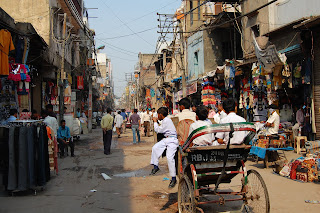





 Our sleeping berths offered great views of the passing countryside and we could also hang outside the train between cars for incredibly hot but fresh air.
Our sleeping berths offered great views of the passing countryside and we could also hang outside the train between cars for incredibly hot but fresh air. 






